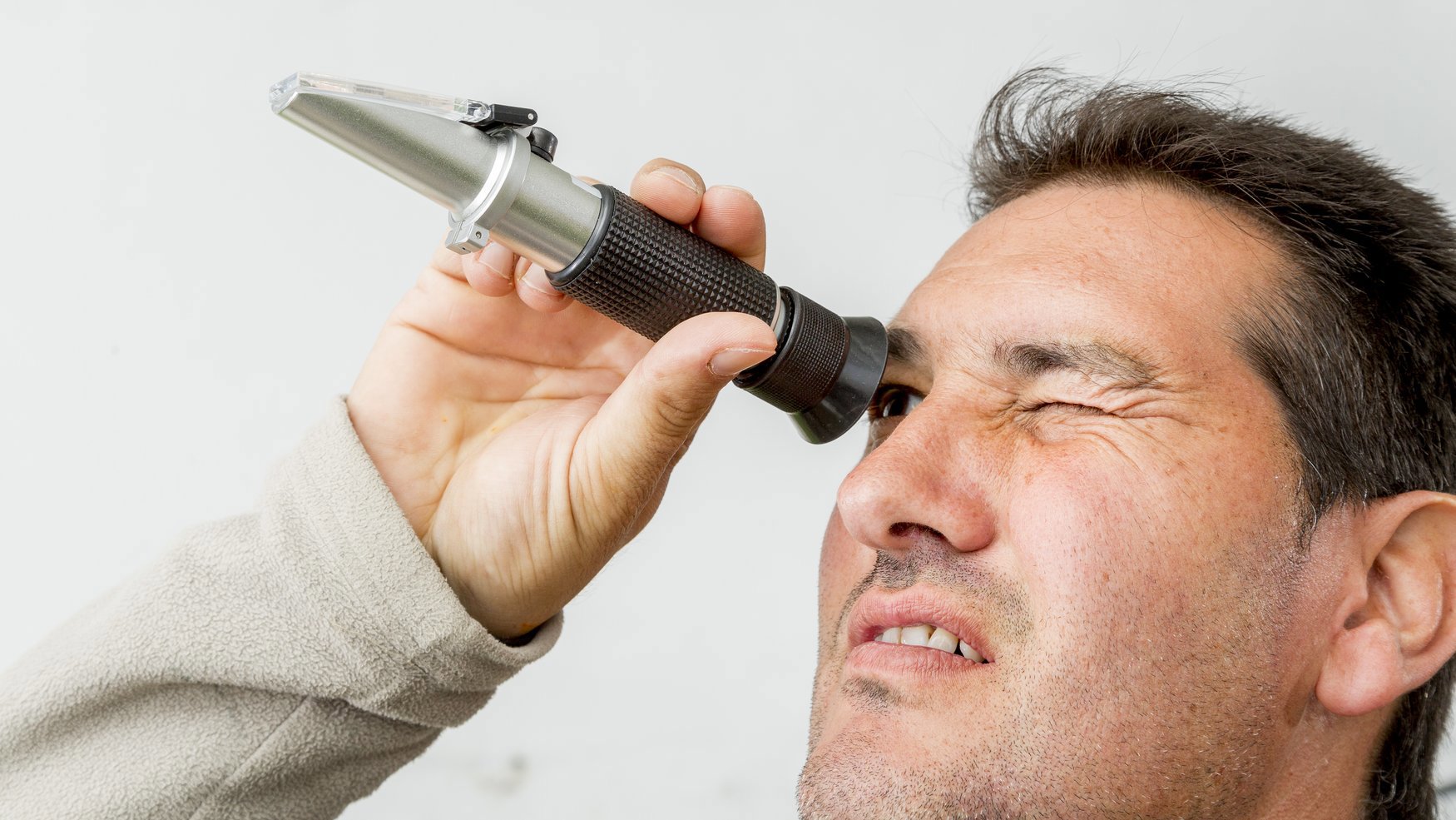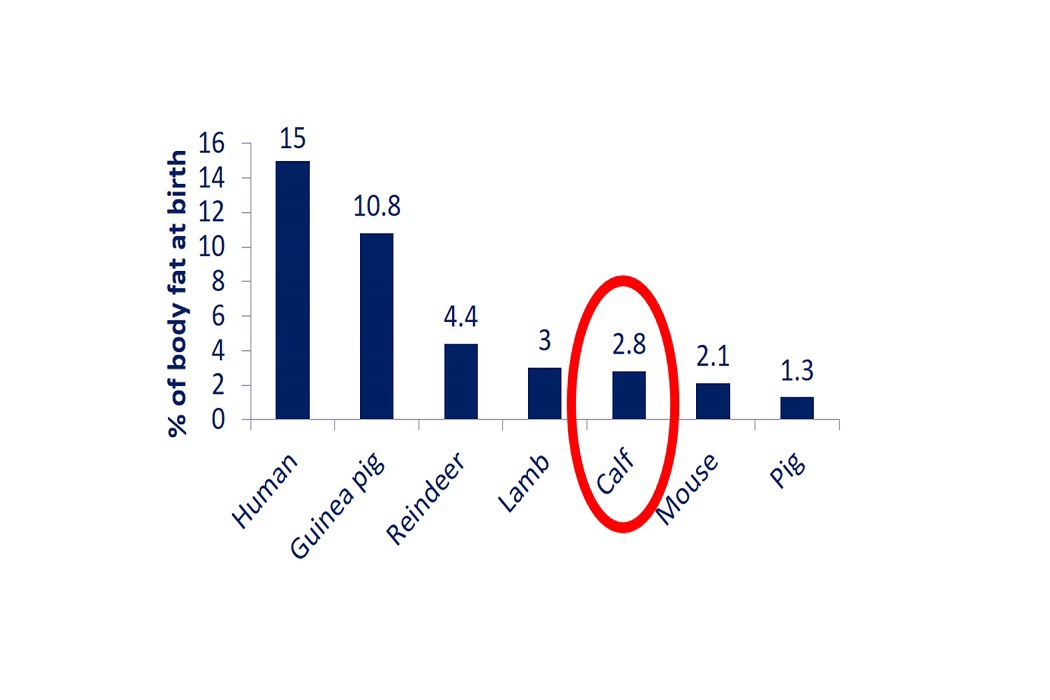
The easiest way to measure colostrum quality
We recommend using a BRIX-refractometer, a simple, inexpensive and accurate tool for measuring the level of milk solids and determining the quality of the colostrum. Every farmer should have one!

1) Calves are born without antibodies to pathogens, making them vulnerable to disease. Providing calves with sufficient amounts of good quality colostrum as soon as possible after birth is a highly effective way to ensure they receive the necessary antibodies.
2) Calves are born with a low energy reserve compared to other mammals (see graph) and benefit greatly from a high-protein super fuel like colostrum, provided promptly after birth.
3) Colostrum provides calves with vital ingredients such as hormones, intestinal growth factors and insulin to support digestion of milk solids in the early days of life and develop a healthy gut.

We recommend using a BRIX-refractometer, a simple, inexpensive and accurate tool for measuring the level of milk solids and determining the quality of the colostrum. Every farmer should have one!
Colostrum management in the early days of life can make or break the metabolic potential of a calf.

Feed them at least 15% of their birth weight, applied in two to three feedings. For example, a 40 kg calf needs four litres of colostrum after birth and two to four more litres during the first day.
Feed calves with colostrum within one to two hours after birth when their digestive tracts will most efficiently absorb the immunoglobulins.
Use a BRIX-refractometer (0-30% BRIX) to check for a measured value of 22 or higher.
Feed colostrum at body temperature of 37-38o C. This supports the calf’s digestive system with no loss of body-heat.